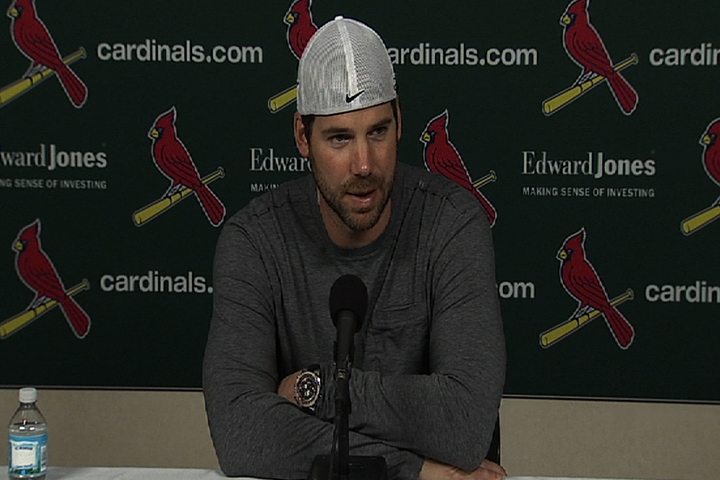
Roy Hallday spent a part of two seasons in East Tennessee en route to becoming one of baseball’s premier starting pitchers. Photo Courtesy: Ebay
According to High School Baseball Web, there is a 0.5 percent chance of a high school baseball player making it to Major League Baseball. The odds of making it the hallowed ground of Cooperstown is even more minuscule. Through 2013, there have only been 200 players enshrined into baseball’s Hall of Fame.
Using those numbers, seeing a future Hall of Famer in a minor league game would truly be a spectacle. East Tennessee baseball fans had that rare opportunity twice when Roy Halladay began to defy the odds to on his way to becoming one of Major League Baseball’s most dominant starting pitchers.
The 6’6” right-hander was drafted 17th overall by the Toronto Blue Jays out Colorado’s Arvada West High School in 1995. Halladay surged through the Blue Jays organization landing in East Tennessee with the Knoxville Smokies in less than two years. The then-twenty year-old made seven starts in a Smokies uniform going 2-3 with 5.40 ERA demonstrating command with a 3-to-1 strikeout to walk ratio for a team that went 75-63.
The two-time Cy Young Award winner was fast-tracked to the big leagues in 1998 when he made two starts at the end of the season for the Blue Jays. In the final game of the season against the Tigers, Halladay was one strike away from throwing a perfect game. Bobby Higginson took an 0-2 pitch over the fence in left field that would be the only blemish on the righty’s pitching line in his first big league victory.

Roy Halladay made six All-Star appearances in 12 seasons with the Blue Jays. Photo Courtesy: David Cooper/Tornoto Star
Halladay went 8-7 with a 3.92 ERA in the 1999 season and appeared close to becoming an elite starting pitching until things unraveled in the 2000 season. Halladay’s ERA ballooned to 10.64 and the organization sent him to Class-A Dunedin to completely revamp his delivery.
Once again, “Doc” quickly made his way through the minor league system that included another stop with the Tennessee Smokies in 2001 in the second season of play at Smokies Park. A second-chance to impress the Smokies faithful was taken in stride as Halladay posted a 2-1 record with a 2.12 ERA racking up 29 punch outs versus only six walks. Two more starts in Triple-A Syracuse and his big league career was back on track.
Halladay made his first All-Star appearance in 2002 and a year later would capture his first Cy Young award winning a league-leading 22 wins pitching nine complete games. The Colorado native would make six All-Star appearances while in a Toronto uniform, but something was missing. A trip to the playoffs.
After spending twelve seasons in Toronto, the Blue Jays shipped the right-hander to Philadelphia for three prospects. In his eleventh start, Halladay threw the twentieth perfect game in Major League Baseball history. It was a 1-0 victory over the Marlins where Doc struck out 11.
For most pitchers, that would be the highlight of their career, but for the two-time Cy Young winner, it was not even the highlight of the season. In Game 1 of the NLDS, Halladay threw the second playoff no-hitter in postseason history against the Cincinnati Reds. The only blotch that evening was a fifth inning walk to Jay Bruce. In his first postseason game, Halladay was in full command striking out eight Reds batters and throwing 79 of his 104 pitches for strikes.
Complete games are rare in today’s game with the importance of a strong bullpen, but Halladay has made going the distance on of his signatures. Doc is the current active Major League leader in complete games (66) and shutouts (20), two stats that have defined a career that seems headed toward a bust in the Hall of Fame.
In January, CBSSports.com wrote an article about active players that are closing in on being Hall of Fame locks. Halladay was on the list as the player closest of the six players listed.
Halladay will turn 36 in May and will likely fall well short of 300 wins (currently with 199) and 3,000 strikeouts (2,066) that would require at least five more seasons of peak performance. However, those benchmarks are much more difficult to reach than a generation ago.
The savvy veteran is one of just five pitchers to have won a Cy Young in both leagues (Gaylord Perry, Roger Clemens, Pedro Martinez, and Randy Johnson are the others). Gaylord Perry is currently in the Hall of Fame with Roger Clemens only receiving 37.6 percent of the vote in his first year of eligibility due to his link to PEDs (Martinez and Johnson will be eligible in 2014 and are expected to be first ballot Hall of Famers).
If Halladay retired today, there would be an argument over his Hall of Fame credentials, but it appears the eight-time All-Star can begin thinking about a speech in Cooperstown.
For Smokies fans, the memory of Halladay’s career may have faded over the years, but the opportunity to call a future Hall-of-Famer one of their own will be a moniker that will be held forever.
Michael Wottreng is a Broadcast and Multimedia Assistant for the Smokies Radio Network. You can follow Michael on Twitter here: @MWottreng















